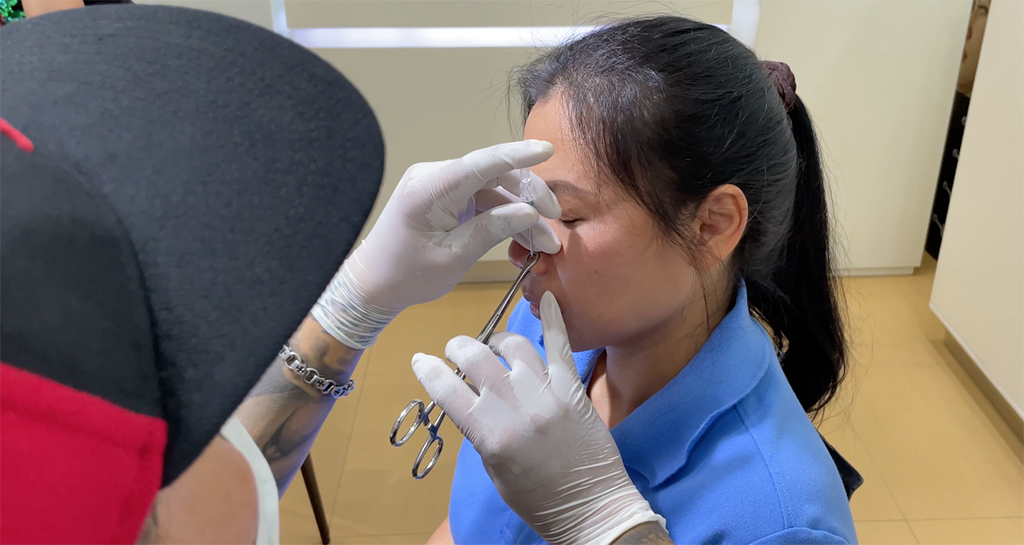Nose piercings are a popular form of body modification. They come in many different shapes and sizes, and there are many kinds of nose piercings. The healing process for a nose piercing can vary depending on the type of piercing, the person’s anatomy, and other factors.
In general, the healing process takes two to three months. if you want to know more information about how long it takes for a nose piercing to heal then read this entire article.
Nose piercing healing process
Here are some general tips for taking care of your nose piercing during the healing process:
Acceptance
If your body has closed around your piercing during the first few days or weeks, you’ll need to remove it.
This is a step-by-step instruction for using the laser to replace lost tissue, or scar tissue, so
- If you’re concerned that you’re developing blood clots or other issues around
- White blood cells restore skin and tissue by collagen.
- Tissue around the jewelry starts to swell to try and reject the piercing.
During this stage, you may also experience the following around the piercing site:
- bleeding
- warmth
- tenderness
- Pain
Healing
This stage occurs a few weeks or months after the swelling goes away. The discoloration will take longer than the skin becoming less swollen.
You’ll need to read and understand each of these steps:
Your body starts making a tube-like structure out of scar tissue, called a fistula. From one opening of the piercing to the other.
A yellow-tinged fluid, which includes lymph, plasma, and dead blood cells, is produced near the piercing
The body tries to wall off the foreign object by producing more collagen around it.
The scar will eventually close up and form a complete seal, but sometimes it takes months or years, especially if the injury was more severe.
Seasoning
This is the last stage of the procedure. Your piercing will be fully healed. You may substitute a small ornament for your earring and wear it in place of the piercing if you prefer.
Depending on how quickly you do your research, this process may take a while.
- The inside lining of the fistula keeps the jewelry from falling out when you lift or remove the fistula.
- The piercing is less likely to close because the tissue is fully healed. It will not try to close itself.
Types of Nose Piercings
There are many different types of nose piercings. The most common are:
Septum piercing
This is the most common type of nose piercing. It’s done through the cartilage in the middle of the nose, just below the septum.
Nostril piercing
This type of piercing is done through the fleshy part of the nostril. It can be done on either side of the nose.
High nostril piercing
This piercing is best described as a nostril piercing that’s as high as it can go, as it sits at the very top of the nostril—right before it becomes the bottom of the nose’s bridge.
Vertical tip piercing
A vertical tip piercing is a type of nostril piercing that’s placed horizontally across the very top of the nostril.
Bridge or surface piercing
This type of piercing is done across the bridge of the nose, between the eyes. It can be done horizontally or vertically.
Nasallang piercing
This is a combination of a septum and two nostril piercings that are connected with one piece of jewelry. It’s also sometimes called a triple nostril piercing.
Septril piercing
The septum is fairly uncommon for piercings, as it requires an extremely stretched septum to already be present.
Best Practices Piercing Aftercare
Your piercer will explain the procedure to you, and then give you thorough aftercare instructions.
To keep your piercing clean and healthy while it’s healing:
- You should always wash your hands before touching anything with a piercing in it.
- Rinse your piercing with warm water and a saline solution twice a day.
- The best way to clean a piercing is to use gentle, unscented soap on the piercing.
Improper Healing Signs
See your piercer or a healthcare provider if you notice any of the following signs of improper nose piercing healing:
- burning or pain sensation around the piercing
- tender to the touch
- smell around the piercing
- discharge from the piercing
- unusually disruptive itchiness
- redness
- formation of blisters
- thick or dry skin
- unusually colored skin
How much time do you need to replace the Nose Piercing
It is not possible to remove or replace a nose piercing before the final healing stage is completed. It is possible that you will have to wait up to 8 months before you can replace your jewelry. At this point, you should not experience any pain, discharge, or discomfort.
If you don’t know whether your piercing is healed, you should see your piercer. Taking out jewelry too early can cause infections or close the piercing. Your piercer can make sure the new jewelry is put in the correct way.
Finding / Conclusion
Nose piercings are a popular form of body modification, and there are many different types to choose from. The most common type is septum piercing, which is done through the cartilage in the middle of the nose. Septum piercings can be tricky to heal properly, so it’s important to follow your piercer’s aftercare instructions carefully. If you experience any problems with your piercing during healing, see a healthcare provider right away.
Khalid Irfan is a Fitness expert who enjoys spending time in gym. He also enjoys being in the outdoors and exploring new opportunities whenever they arise as well as researching new topics to expand his horizons.

Leave a Reply